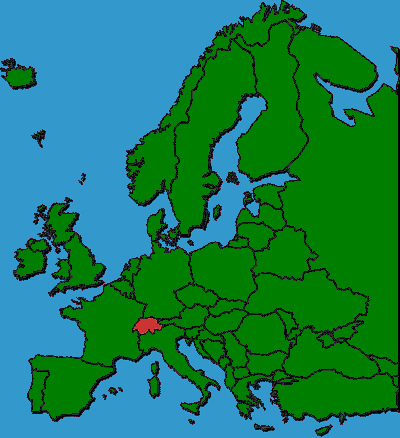
Circle the area on this map

D. Under its direct democracy voting, any Swiss citizen may challenge any law approved by the parliament or, at any time, propose a modification of the federal Constitution. Some referendums are proposed parliament and others are put on the ballot by voters’ signatures. The nation’s unique system includes elected representatives direct voting and is called a semi-direct democracy.
D. In two cantons, local issues are decided by direct democracy in annual open-air meetings of voters. The other cantons have elected legislatures. Switzerland has four official languages: German, French, Italian and Romansh. About 37% of Swiss citizens are Roman Catholic, 30.7% are Protestant or other Christian, 23.9% have no religion and the rest are Muslim, Jewish or unspecified.
D. Like U.S. states, each canton has self-government on local issues and elects two members to the upper house of Switzerland’s federal parliament. The lower house made up of representatives elected from across the country based on population. Unlike the United States and most other governments, a seven-member council runs the federal administration instead of a single chief executive.
C. Liechtenstein has an annual GDP person of $139,100, making it the world’s richest nation by that measure. Switzerland is bordered by Liechtenstein and Austria to the east, Italy to the south, France to the west, and Germany to the north. Lebanon in southwest Asia and Liberia and Lesotho in Africa are much poorer countries than Liechtenstein or Switzerland.